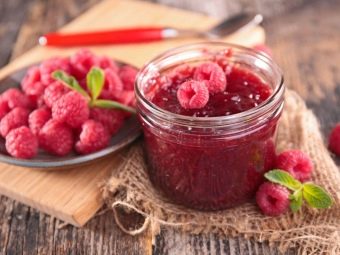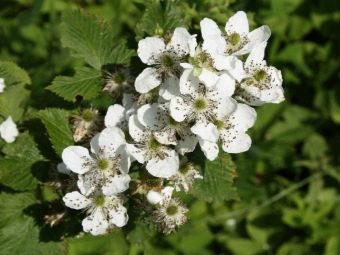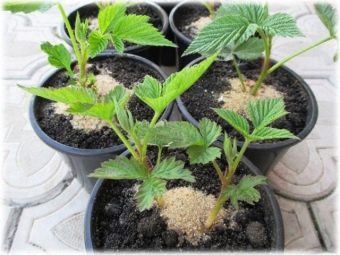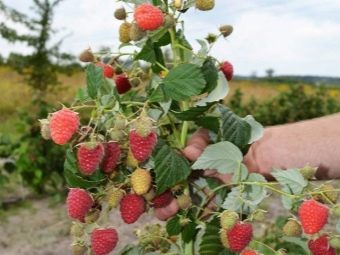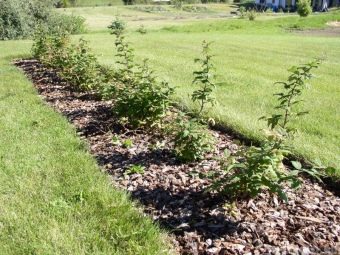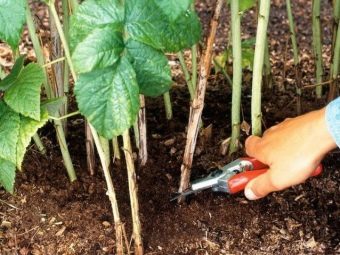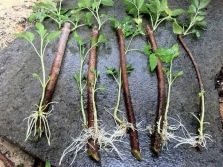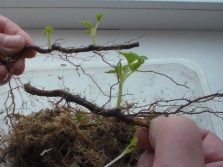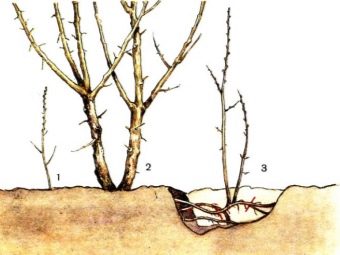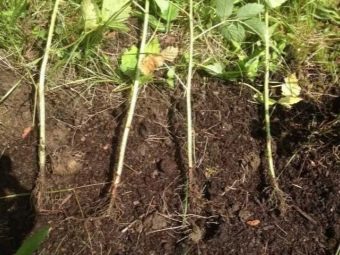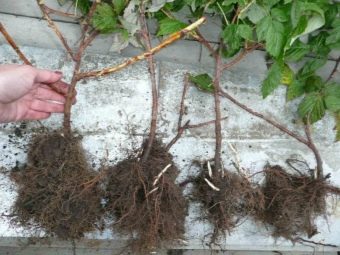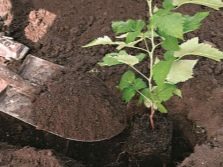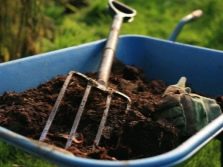Reproduction of raspberry: ways and their features
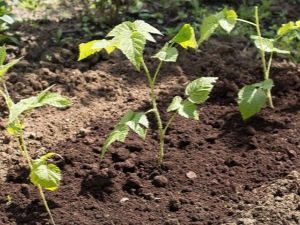
Raspberries.This fragrant, fragrant and sweet berry is loved by adults and children. From the fruits of raspberry bushes make tasty, healthy jam, as well as jams, compotes, liqueurs and tinctures. In addition, it should be recalled and the healing properties of these berries.
Raspberry bushes can be found in forest thickets, on the meadows, in gardens and on private plots. In the wild, raspberries form thickets, raspberries. The fruits of such bushes are much smaller than garden varieties.
Culture description
Raspberry is a branched, spiny half-pot about 2 meters high and belongs to the family of pink flowers. The plant has a biennial life cycle. In the first year after planting, green shoots with thin spikes appear. In the second year, flowers and fruits appear on the shoots. After the end of fruiting, in the fall, the shoots die off, and the roots emit new, young shoots.
In early summer, white or white-pink flowers appear in raspberry bushes, gathered in small inflorescences that are located in the leaf axils. The leaves of the plant are complex, pinnate, consist of several small leaves on long petioles. Raspberry berries are made up of a large number of small sized farms. The color of the fruit is bright red.
Flowers appear on raspberries in June, and by early August the first fruits are ripening. Pollinating plants occurs with the help of various insects. Raspberry seeds are oval, small, white and yellow.
Raspberries can be propagated with the help of seeds, cuttings or rhizomes. The plant is very popular and widely distributed throughout the world.
Bush raspberry grows faster during vegetative reproduction. To multiply it at home and conduct microclonal grafting is not at all difficult if you follow our recommendations. Seedlings will give the roots very quickly, if you put it in advance in the water with a nettle.
The length and shape of the shoots depends on the variety.
How to increase the harvest
To increase the yield of raspberry bushes, you must follow and follow a few simple rules of agricultural engineering. At the same time, the number of harvested berries will increase significantly. These rules are simple, and their implementation does not require much effort.
- Malinnik must be placed on well-lit sites. Raspberry likes sunlight and does not tolerate thickening. Therefore, it is necessary to maintain some distance between plants and rows. The distance between rows of seedlings should not be less than 1.5 meters, between plants - not less than 70 centimeters. This will avoid the appearance of various harmful insects and significantly reduce the risk of plant diseases, as the bushes are better ventilated and receive the necessary amount of sunlight.
- Categorically not allowed the formation of shoots. It is necessary to timely remove the spawn-bearing branches and excess young shoots at the very beginning of its appearance. The young growth takes away from the bush the forces necessary for wintering the plant.
- Raspberry bushes should be properly shaped. The raspberry bush should consist of 8 healthy, one and a half meters tall shoots without damage. In addition, you should leave an additional 2-3 escape, in case of injury of the main branches.
- It is necessary to regularly process raspberry bushes from various pests and diseases. Despite the huge number of various insecticidal agents for treating trees and shrubs from pests, raspberry bushes are more expedient to treat with decoctions and tinctures of plants. It is much safer for human health.
- Careful preparation of raspberry bushes for winter. In order for the plants to easily endure the winter, you need to take care of the preparation of the bushes. Initially, the remaining leaves should be removed from the shoots; this should be done in October, before the first frosts. Then the branches should be slightly bent to the ground.Next, you need to press the branches with heavy objects, or you can use special metal brackets.
Throughout the winter, care must be taken to ensure that the shoots are sluggishly covered with snow. The thickness of the snow cover should be at least half a meter. In addition to snow, some varieties of raspberries require additional warming.
- Mandatory feeding of raspberry bushes with organic fertilizers. In early spring, when the snow melts, it is necessary to mulch the land in the raspberries with a small layer of rotted manure. Next, on top of the manure should be put a thick layer of humus. This feeding promotes intensive growth of the plant.
- Categorically it is not recommended to dig the ground in the raspberries. Digging the ground in the berry leads to damage to the roots of the plant, which has a great impact on the yield of bushes. With the help of regular mulching of the soil it is possible to protect the raspberries from weeds, significantly reducing the need for raspberries in watering.
- Mandatory double pruning. The greatest harvest, as a rule, is gathered from the tops of the raspberry shoots. Much less berries are formed on the middle part of the branch, there are practically no fruits at the bottom of the shoots. In early spring, it is necessary to cut the tops of the shoots by about 10 centimeters. Due to this, the growth of additional lateral growths is stimulated. After some time, several lateral growths are formed on the shoot. A year later, in the spring, you should trim the side shoots by 10 - 15 centimeters.
Thus, this method of pruning shoots stimulates the growth of new shoots on the main stem and lateral processes, thereby increasing the yield several times. It should also be noted that the lateral processes appear at different times, thereby increasing the fruiting period of the bush by about a month.
- It is necessary to regularly rejuvenate raspberry bushes. Raspberry fruits well only a few years. The yield and ability of the bush to form new, young shoots gradually decreases. You do not need to fundamentally solve this problem and uproot the bush. Enough to rejuvenate the plant. Start with the decrepit roots of the bush. They must be removed. It takes a lot of time and effort, since the root system of crimson bushes is highly developed and occupies a large area. In order to achieve the maximum effect, it is necessary to add mineral and organic fertilizers to the soil.
Thus, following these simple rules and advice of experienced gardeners, you can significantly increase the yield of raspberry bushes.
Breeding methods
Dilute raspberries in your backyard can be quite easily and simply. To do this, you need to have quite a bit: the right tool, good planting material, favorable soil and conditions. In addition, it will require a sufficient amount of water, the optimum temperature for the growth and development of seedlings, sunlight.
There are several common and popular breeding methods for raspberry bushes.
- Breeding raspberry seed. This method is the most complex and will require a lot of patience, time, effort and does not guarantee the preservation of the raspberry variety.
- Cuttings. This method allows you to preserve the maximum variety, dilute the required number of raspberry bushes in a short period of time, does not require much effort and financial investment.
- With the help of root cuttings. The best option for breeding remontantny raspberry varieties.
- Reproduction of root suckers. The most effective way of breeding raspberry bushes, in addition, the fastest.
- Cuttings, harvesting which is made in the fall.
Preparation of planting material
Depending on the method of reproduction, the procedure for the preparation of planting material differs.
- Procurement of seeds. First you need to select the most ripe berries and carefully pereteret before the formation of juice.After that, the resulting mixture should be placed in water. Mix thoroughly and drain the floating waste. This procedure must be repeated several times until the seeds that have settled on the bottom of the bowl appear. Next, strain the contents of the bowl through a fine sieve. The resulting seeds should be decomposed on dry paper or cloth and dry well. After completion of all manipulations, seeds can be prepared for planting. Then the seeds are kept in water for about a day, mixed with fine, moist sand.
After that, the resulting sand mixture must be put into small nylon sacks: they are moistened, covered with sawdust and determined to be stored in the cellar for about three months.
- Green cuttings are best made in the summer, on a cloudy day.. Green sprouts are cut at the root with a pruner. For quick and better rooting, you should put the cuttings in a special solution that stimulates rooting. Next, the cuttings need to be planted in the prepared moist soil and covered with foil. The distance between plants should be about 10 centimeters. After planting, it is necessary to water regularly and feed seedlings in a timely manner.
- Harvesting root cuttings. Root cuttings are part of the root, which has several side branches. Such shoots can be obtained by transplanting raspberry bushes to a new place by cutting off extra roots. Such roots should be at least 2 millimeters thick. In the spring, harvested roots should be planted in the prepared soil, watered thoroughly and covered with plastic wrap.
Storage
For storage of planting material in the winter, you need a cool room. Before laying the plants for storage, you should carefully examine the seedlings and select strong and healthy plants. Rhizomes are placed in a bag with raw sawdust and wrapped with polyethylene. The temperature in the room should be low. At the same time it is necessary to limit the access of sunlight to the room.
There is an old proven folk method of storing planting material. It is most suitable for long-term storage. This method involves the use of clay.
It should be pre-diluted clay to a certain consistency. Then rhizomes of seedlings are dipped into the solution and placed in a prepared plastic bag. In this case, the clay, drying up, forms a protective layer and does not allow the roots of the plant to dry.
Landing dates
Raspberries can be planted in early spring and autumn. The optimal period for autumn planting raspberry bushes - the second half of September, early October. This will allow the seedlings to take root before the onset of frost.
You must first prepare a place for landing. It is necessary to dig a special trench, the depth of which should correspond to the height of the spade bayonet. At the bottom of the trench lay a layer of various plant residues, small branches. Next you need to lay out the manure and fertilizer. After that, a small layer of soil is poured and prepared planting material is planted. For winter landing it is necessary to warm and cover with snow.
In early spring, you should remove the shelter and cover the seat with a special film that lets in air. In the future, you need to regularly water, loosen, remove weeds, fertilize and handle planting from pests and diseases.
Useful tips
Raspberries - very tasty and fragrant berries. But in order to provide enough fruits, you need to know how to care for raspberry bushes and how to plant them properly.
- Initially, you must select a suitable site for landing. It should be located on the windless side, most illuminated by the sun. The soil for raspberries prepared in advance and should be loose and soft.
- Planted raspberry bushes can be in the fall and early spring. Seedlings need to choose for this strong and healthy.The best option are young shoots with a well-developed root system of about 20 cm.
- Be sure to regularly make the necessary fertilizers. Crimson bushes need the timely introduction of organic, potash and phosphate fertilizers.
- Planted raspberries should be in rows. The distance between the rows should be at least two meters. This is necessary for better airing raspberries. Between the bushes the distance should be about half a meter.
- When planting, prepare the wells in advance, apply fertilizer and prepare the base for the seedling. The size of the hole depends on the parameters of the root system of the shoots and varies from forty to sixty centimeters in diameter and about thirty centimeters deep.
- It is necessary to regularly monitor the soil moisture in raspberries. Raspberry loves moisture, but it should not be watered too much. Maintain soil moisture by mulching the soil in the berry.
- To protect the shoots from frost in winter, you need to warm the plants in the fall and cover with snow. The height of the snow cover in the raspberries should be at least half a meter.
- Timely treatment of plants from pests and diseases is also an important factor when growing raspberries. It is more expedient to use various decoctions and tinctures of plants.
- Should not be ignored pruning raspberries in the autumn. This will help identify and remove diseased plants, as well as increase the yield of bushes next year.
The yield of bushes depends on the planting of raspberries, the chosen place, and quality care. Raspberry is a heat-loving plant that loves a certain soil. Therefore, only by creating comfortable conditions for it, you can count on a good harvest. To cope with such a task can absolutely any gardener.
On the reproduction of raspberry root cuttings, see the following video.

